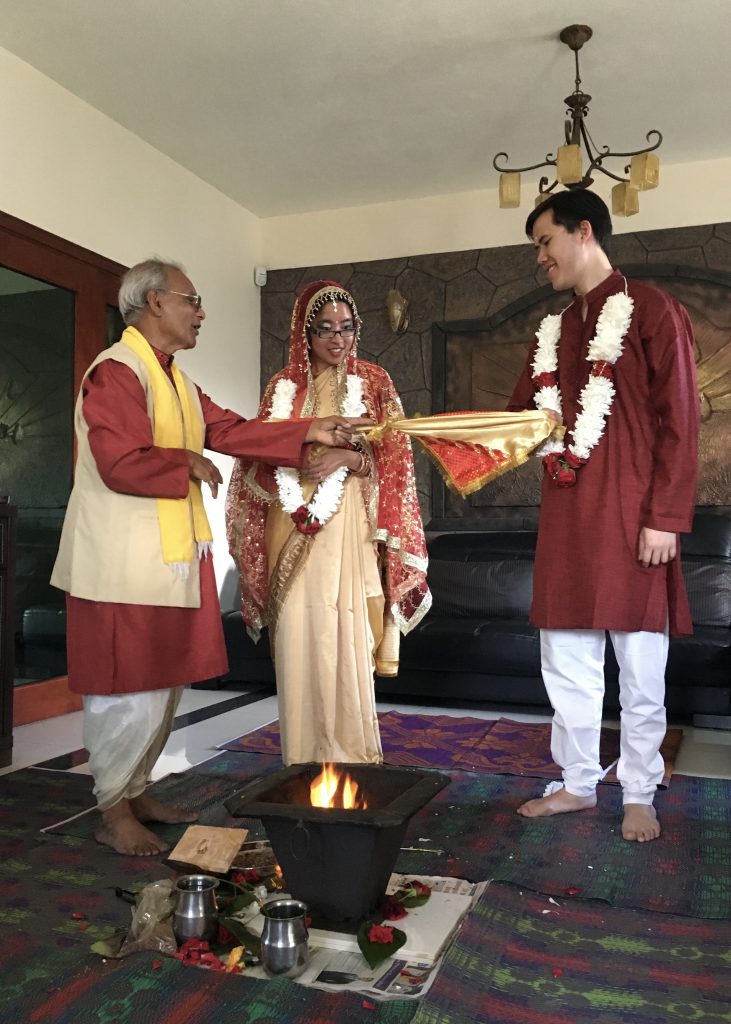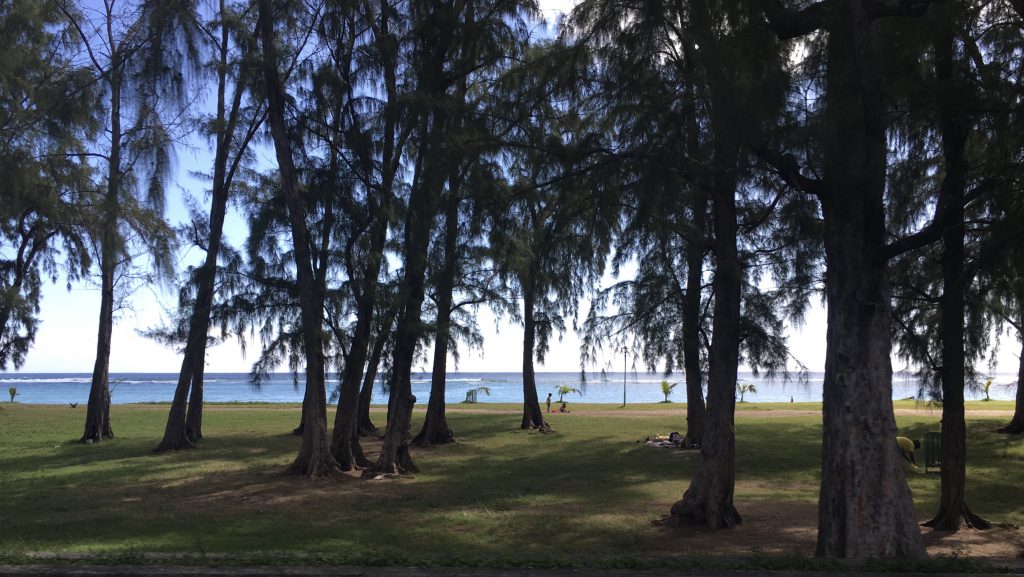Diary: Saturday 07 May
It is a good start to the day when the weather is sunny.

This is even more necessary for a wedding day.
Today we meet the bride’s Mauritian Indian family, who turn out to be superb company. We are warmly welcomed into the home of her uncle and at once the extended family introduce themselves, and connections are made.
It turns out that with so many of the relatives having lived or studied in England, we all have a lot in common. Mr Gochugaru, the only Englishman in the company of a large Mauritian and Malaysian contingent, instantly feels at home.
And everywhere you turn, someone is offering you a drink, some snacks, a seat, another welcome and most of all, advice on what is the essence of being Mauritian.
The essence of being a Mauritian is to be as welcoming as possible. The islanders are made up of many different racial cultures and everyone is invited to be part of it.
The wedding ceremony was conducted in Sanskrit and English by a pandit, who is a Hindu scholar and teacher. It was full of meaning and (for those of us who are more familiar with this) largely reflected the vows made at Christian weddings: that marriage is a gift from God, it is for life, that both husband and wife have a duty to care for each other and for their family, and that no one should pull the couple apart.
The latter was clearly illustrated with the bride and groom tying two squares of embroidered cloth together. The groom took one corner from each cloth and tied the first knot and then the bride tied the second knot. When an attempt was made to pull the two pieces of cloth apart the knots became tighter. The pandit said that when a couple faces something (or even someone) which wants to pull them apart, then they should hold on to each other even more tightly.


As part of the ceremony, the bride’s parents offer gifts to the groom (Godaan). It used to be a cow to signify prosperity and good health. I wonder what the modern equivalent is!
Later the guests were treated to a lunch of chicken biryani, which is chicken cooked with spices and basmati rice. Here the Mauritian touches were to serve it with a spicy tamarind chutney, fresh green chilli sauce and a simple salad of sliced red onions and cucumber.

The hotel we are staying in is in Flic en Flac, on the west coast of the island and away from any one of the five big towns. In order to get to anywhere else we have to travel some distance. The landscape at this time of the year is dominated by sugar cane plantations and I could never tire of looking at the tall canes with their sprouting leaves swaying in the breeze.
I grew up in Malaysia where on Sundays my mother would buy freshly-pressed sugar cane juice for us as a treat. The juice was so sweet and the weather so hot that we needed to drink it with cubes of ice. Looking out of the bus window I yearn for a landscape that no longer exists in Malaysia.


The ride to the hotel also reminds me of Batu Ferringhi beach in Penang, where we would go for family holidays as children. The excitement of seeing the sea through the casuarina trees…I can feel the same excitement now.


Later in the evening we gather again to further celebrate the day with dinner al fresco. It is a warm evening with guests enjoying the food and each other’s company.

We are entertained by local sega dancing and a fire-eating performance. A sunny start to the day and and an even hotter end to it!

